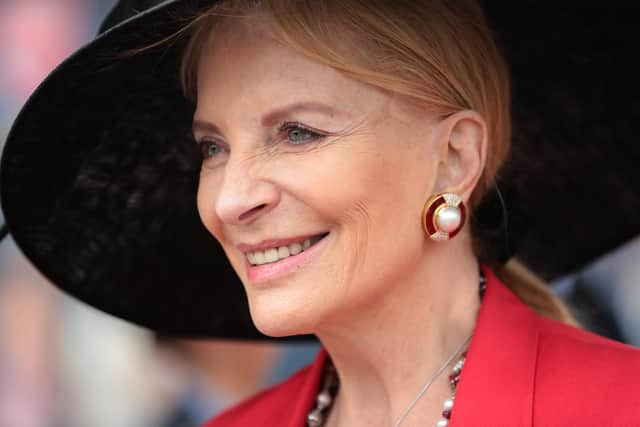What is a Blackamoor brooch? Meaning and history of racist item Princess Michael wore at Meghan Markle lunch
and live on Freeview channel 276
The Duke and Duchess of Sussex’s Netflix documentary, Harry & Meghan, revisits some of the difficult moments the couple endured as senior royals. One event discussed in the serie which renewed claims of racism within the royal family and was first reported on in 2017, was the day that Princess Michael of Kent wore a racist brooch to a lunch which Meghan Markle also attended.
Prince Harry said that the episode was an example of ‘unconscious bias’ within his family. Meghan Markle, who married Prince Harry in 2018, is mixed race - her father is white and her mother is Black. She and Prince Harry have two children, Archie and Lilbet, believed to be the first non-white children born into the British royal family.


What is a Blackamoor brooch?
Advertisement
Hide AdAdvertisement
Hide AdThe term ‘blackamoor’ or ‘black moor’ is an archaic British term for Black people, and originally used in specific reference to Black Muslims. The term is now considered to be very offensive, Blackamoor artwork included sculptures and jewellery and was popular in the 17th and 18th centuries.
In this style of artwork, Black people were often depicted as slaves or servants, although they were also shown to be wearing ornate jewellery and clothing. The fashion has long been unpopular because it is rooted in British colonialism and racism, as the figures hark back to a time during the days of Empire and the conquest of African nations by the British and other European powers.
When did Princess Michael wear a Blackamoor brooch?
Princess Michael of Kent, a member of the British royal family who was born in what is today the Czech Republic, wore a Blackamoor brooch to a Christmas lunch, which Meghan Markle also attended, in 2017.
She was pictured wearing the broach, which depicted a Black man wearing a golden turban topped with jewels, and a golden robe, against her white coat as she arrived at Buckingham Palace for the lunch. Princess Michael was not sat at the same table as Markle, who was at the time engaged to Prince Harry, during the lunch, though the two are believed to have been introduced at the event.


Advertisement
Hide AdAdvertisement
Hide AdWhen the news of her decision to wear the brooch caused controversy at the time, Princess Michael apologised and said that she would retire the item of jewellery. A statement issued on her behalf said: “The brooch was a gift and has been worn many times before. Princess Michael is very sorry and distressed that it has caused offence.”
Princess Michael, whose father was a member of the SS, had previously been involved in controversy over racism in 2004 when she got into a row with diners at a New York restaurant. She was alleged to have said ‘you need to go back to the colonies’, but when challenged on the statement, she reportedly said: “I did not say ‘back to the colonies’, I said you ‘should remember the colonies.’ Back in the days of the colonies there were rules that were very good.”
What did Prince Harry say about the Blackamoor brooch incident?
Speaking in his Netflix documentary, Harry & Meghan, the Prince said: “In this family, sometimes you are part of the problem rather than part of the solution. There is a huge level of unconscious bias. The thing with unconscious bias, it is actually no one’s fault. But once it has been pointed out, or identified within yourself you then need to make it right.
“My son, my daughter, my children are mixed race, and I’m really proud of that. When my kids grow up, and they look back at this moment, and they turn to me and say ‘What did you do in this moment?’ I want to be able to give them an answer.”
Comment Guidelines
National World encourages reader discussion on our stories. User feedback, insights and back-and-forth exchanges add a rich layer of context to reporting. Please review our Community Guidelines before commenting.
